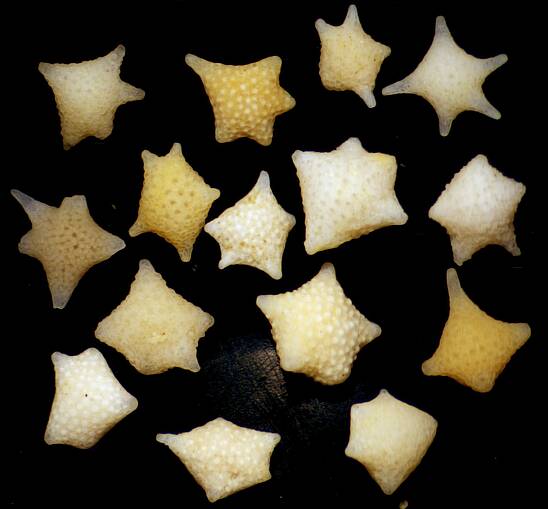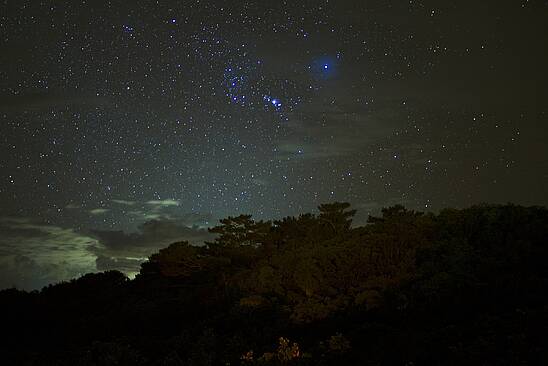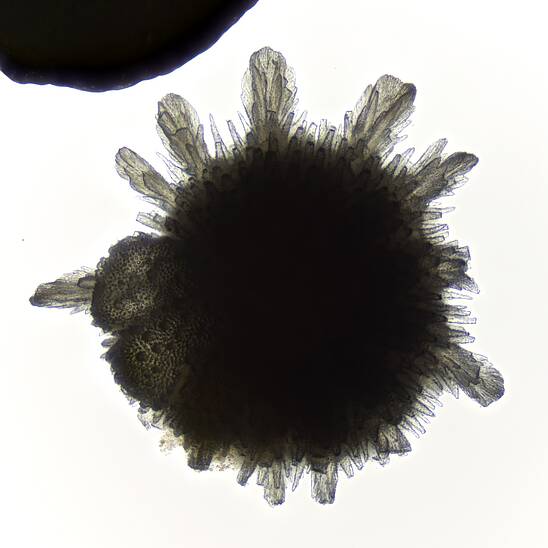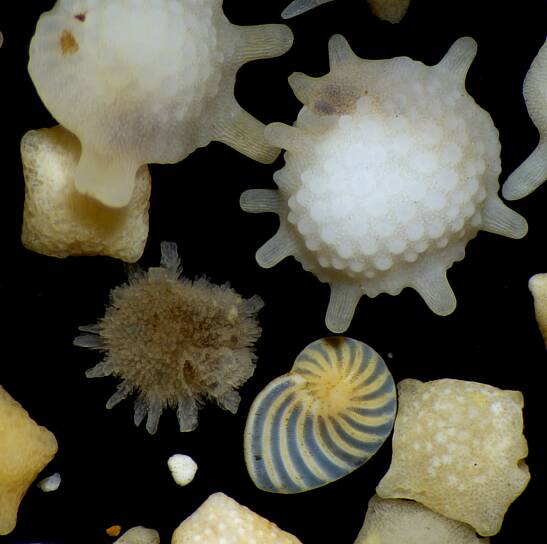Garbage beach with special sand
The next morning we want to go to the beach near the hotel to get a special sample for the microscope. Once there, the whole beach is full of plastic garbage, which makes it difficult to get to the waterline. Most of the garbage is plastic bottles, but you can also see a lot of lost fishing gear. Torn nets and lines, broken buoys and fenders are scattered along the beach. Most of it is washed up by currents from other countries. Actually one would like get away from here as fast as possible. Nevertheless we collect a handful of sand, maybe something interesting can still be found in it...
Shortly before we start the jpurney home, we are already back on Ishigaki again, the sand sample is examined with a strong magnifier. We need to look closely, but there are some grains of the world-famous star sand in them. These sand grains, shaped like a star, are actually the calcarous skeletons of unicellular organisms, called foraminifera. The 10,000 species represent an enormous variety of shapes, but the small stars (Baculogypsina sphaerulata) and sun-shaped shells (Calcarina sp.) are found in large numbers only on Iriomote. This is what this island and the actual star sand beach (Hoshisuna no Hama) in the north of the island is famous for. The foraminifera live in the reef and in the seagrass beds and are washed up on the beach during storms. The star sand has made us curious about this journey, and the starry sky over the jungle offers a dreamlike backdrop on the end of the journey. It is great if you are able to combine two passions - astronomy and microscopy - so wonderfully on a single trip. Where in the world is it possible to see stars under the microscope?
Blog-Post by JBL: click here

 Deutsch
Deutsch
 English
English
 Francais
Francais
 Español
Español
 Italiano
Italiano
 Nederlands
Nederlands
 Polski
Polski






